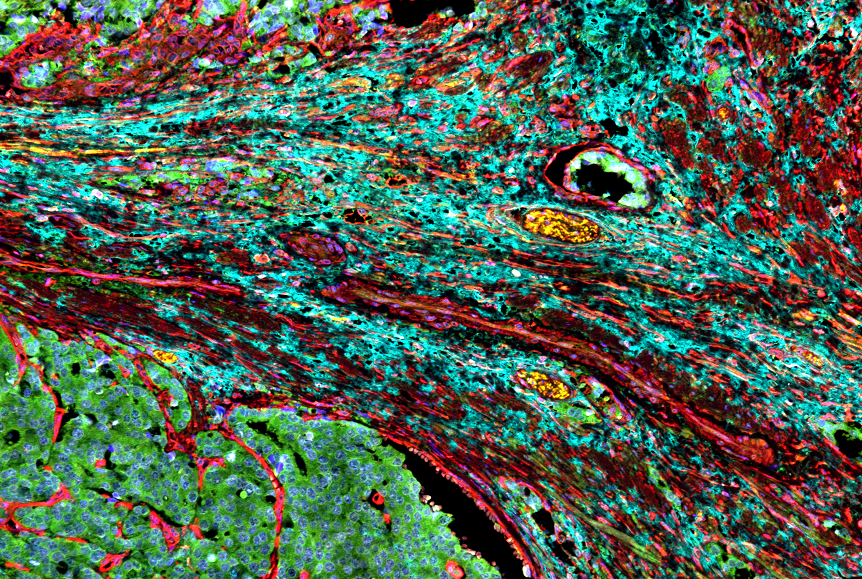Tumours Use Lactate to Bully Surrounding Cells into Helping Them

Some tumours can force neighbouring cells into supporting cancer growth by releasing lactate into their local environment, according to a study published in Cell Reports. The findings could lead to drugs that target that defence mechanism to help cancer patients ؘ– and also boost a current class of cancer drugs.
In the study, the researchers determined how developing tumours recruit nearby cells called fibroblasts to work as their enablers. Fibroblasts form part of the stroma, organs’ connective tissue, and normally have important repair and maintenance functions. But cancer-associated fibroblasts (CAFs) acquire properties that allow them to assist tumours in ways that make the tumours more malignant and harder to kill.
The researchers also discovered that PARP-1 inhibitors, a widely used class of cancer drugs, mimic one of the key steps in CAF recruitment, and can hamstring their own effectiveness by inadvertently switching local fibroblasts to this cancer-enabling mode.
“Future therapeutics that block this cancer-associated state of fibroblasts might be useful on their own or as a way to improve the effectiveness of PARP-1 inhibitors,” said study co-senior author Dr Maria Diaz-Meco.
Dr Diaz-Meco collaborated in the study with the laboratory of co-senior author Dr Jorge Moscat.
Developing tumours are known to often modify their local environments for their own survival and growth. Cancer-associated fibroblasts are a central component of the tumour microenvironment in prostate, lung, colon and other cancer types. Targeting these cells is therefore seen as a promising complementary approach to standard cancer treatment – and one that could work very broadly against cancers of different cellular and genetic origins.
“Cancer-associated fibroblasts support tumour growth by providing growth factors and essential metabolites to the tumour, by fending-off anti-tumour immune cells, and in many other ways,” Dr Moscat said. “The result is a tumour that is more malignant and treatment-resistant.”
Several years ago, the researchers discovered that a protein called p62, produced in fibroblasts, normally suppresses the CAF state, though many tumours find a way to restore this state by reducing fibroblast p62 production. In the new study, they showed that tumours achieve this by secreting high levels of an organic compound called lactate, also known as lactic acid.
Lactate is a normal by-product of certain energy-production processes in cells, which are often hyperactive in tumours. In experiments with prostate cancer cells, the researchers detailed the molecular chain of events by which tumour-secreted lactate disrupts the normal metabolism of fibroblasts, leading to reduced p62 gene activity and the activation of the tumour-enabling CAF state.
The finding is significant because it illuminates a major cancer-promoting pathway, which in principle can be targeted with future drugs as a standalone or add-on treatment strategy.
A second, surprising finding was that a key step leading from tumour lactate secretion to fibroblast p62 suppression turned out to be the inhibition of a DNA-repair enzyme called PARP-1, which has the same effect as PARP-1 inhibitors – suggesting that these drugs might be working partly against themselves by creating a more tumour-friendly microenvironment.
In vitro and animal testing confirmed that the PARP-1 inhibitor olaparib does reduce p62 in fibroblasts, and pushes them into the CAF state, in turn increase tumours’ resistance to the drug’s primary cancer-killing effect.
Thus, the researchers emphasised, future treatments that reprogram CAF cells to the non-cancer state or prevent their development might greatly enhance PARP-1 inhibitors’ anti-tumour effectiveness.
“We’re now studying several potential CAF-blocking therapeutics in our labs,” Dr Moscat said.
Source: Weill Cornell Medical College

